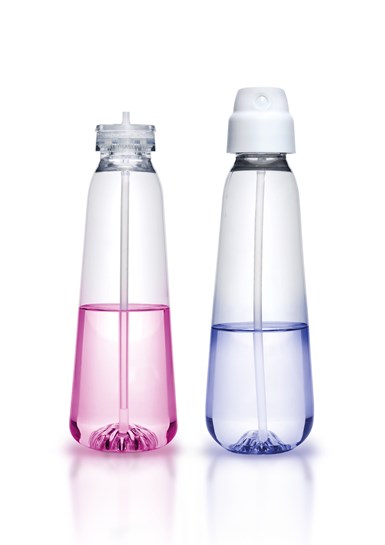All-Plastic, Recyclable Aerosol Spray Bottle
Plastipak introduces spray bottle designed for recyclability.
has introduced SprayPET Revolution, an all-polymer aerosol container. The design uses no metal valve or rubber gasket, eliminating the need for their removal from the recycling stream at PET reprocessing plants.

The SprayPET container is all polymer with no metal valve or rubber gasket.
Photo: Plastipak
The design has been assessed and approved by both the European PET Bottle Platform (EPBP) and the Association of Plastics Recycling (APR).
The valve itself is constructed of new polymers with a density less than that of water. After shredding, these polymers are easily separated from PET, which sinks. The PET can then be recycled into new bottles or other packaging materials, while the polymers from the valve can be used to create products like outdoor furniture, decking, and pipes.
Produced under license from , SprayPET Revolution uses spin welding technology to attach the valve to the container. It is available as a dip-tube or bag-on-valve application. Recycled PET can be incorporated into the container body.
According to a life cycle analysis, the SprayPET container supports reduction in Scope 3 emissions compared with aluminum aerosol containers.
Plastipak is offering customizations such as container shape, decorative sleeves, and direct object printing.
Related Content
-
Medical Molder, Moldmaker Embraces Continuous Improvement
True to the adjective in its name, Dynamic Group has been characterized by constant change, activity and progress over its nearly five decades as a medical molder and moldmaker.
-
How to Optimize Injection Molding of PHA and PHA/PLA Blends
Here are processing guidelines aimed at both getting the PHA resin into the process without degrading it, and reducing residence time at melt temperatures.
-
Get Color Changes Right In Extrusion Blow Molding
Follow these best practices to minimize loss of time, material and labor during color changes in molding containers from bottles to jerrycans. The authors explore what this means for each step of the process, from raw-material infeed to handling and reprocessing tails and trim.






